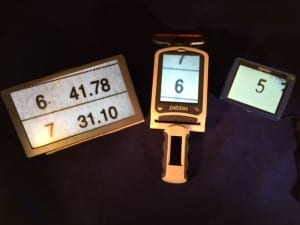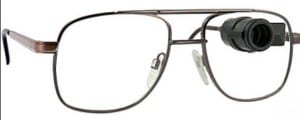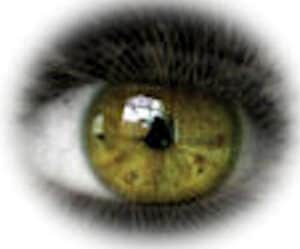Low vision aides are associated with high powered eyeglasses and magnifiers. Assistive technology refers to low vision aids, both high tech and low tech. They are devices and products designed to level the playing field for those with visual impairments remain active, engaged, and independent.
With assistive technology, students can keep up with their classmates and move efficiently through the higher levels of education. The working visually impaired can maintain employment with the right assistive technology in place. When we are not working or going to school, assistive technology helps with activities of daily living.
This new age of electronic technology is a leap forward for those with disabilities. So do not fear technology, it is your friend..
Here is a look at assistive technology from low tech to high tech for some essential activities of contemporary living:
Assistive Technology for Reading:
For those with sub-normal vision the most significant area of disability is reading the printed word. Those whose visual impairment is mild can be best described as print disabled. While they are able to function quite well with many aspects of life, the ability to read ‘normal’ print is a limiting factor. So much of what we do is based on our capability to see the details of print. The solution is to make it larger, also known as magnification. The low tech solution has long been high-powered eyeglasses and magnification by optical lenses. These options are still available and work well if prescribed accurately. The higher tech options are the video magnifiers and CCTVs (closed-circuit televisions). These provide larger reading areas, with less of the optical annoyances like distortion and aberrations.


Another portal to print accessibility is computer technology. Designers of computer software have realized the importance of accessible computer technology for users with disabilities. Within the operating systems are accessibility applications for enlarging the print and narration of the text on the screen. If that is not enough, third-party computer programs can be downloaded to the system to act as workhorse accessibility programs.
Other devices can be attached to the desktop or laptop computer to expand its capability to access text. Scanners and camera can image traditional books, magazines, and documents, which can then be transferred to the computer where an optical character recognition (OCR) program translates the text for the computer, which can now be manipulated by the user. A Text-to-Speech (TTS) program can read aloud what is on the computer screen. If you wanted to create text without typing, there are dictation programs called Speech-to-Text (STT). STT , also known as Speech or Voice Recognition, is used as a personal assistant and responds to your commands to do computer tasks, such as “Open…”, “Close…”, etc.
Those who prefer not to sit at a computer to read a book, now have many options both in large print or audio format. The long standing low tech solution is the large print format, which is alive and well in the marketplace. (My book, Insight into Low Vision is in large print format.) EReaders and tablets can make regular printed ebooks into large print by way of customization features to make the font larger. There are some additional options like inversion (white print on a black background), grayscale, and brightness control. Some of the better tablets have test-to-speech which reads what is on screen.
Audio books are a format that has been around for a while. Audio books can be found on CD packs from booksellers and libraries. Audio books can also be downloaded from booksellers and libraries to personal media players (PMP), e-readers, and computers. For those who qualify, the National Library Service has a “Talking Book” program.
Assistive Technology for Organization (for home, work, and School. )
It has long been the trick of anyone trying to keep themselves organized to use labels and colored tags. Large numbered clocks and watches help to keep us on time. Large print calendars and appointment books help too. Those are the low tech solutions that still work quite well. There are electronic technologies that can help with a few of the organizational tasks.
The electronic labeling system allows you to tag an object and vocally record a label identifier. Watches and cell phones can be customized to give auditory signals for time, date, and reminders. The new smart watches have many features which can be helpful if you can get pass the very small screen. .
Personal digital assistants (PDA) are screen-less hand-held digital information storage devices that can do it all: record messages, give time, reminders, upload documents, computer connectivity, and narrate books and other documents.
Assistive Technology for Mobility:
Just like everyone else the visually disabled are on the move. The blind community has long been using aides and techniques of mobility. Cities have made an effort to make signs larger and some cross walks have audible signals. There are gps units and mobile device applications that give step-by-step directions for moving about the city.
An individual with low vision will benefit by using a hand-held telescope for spotting distance objects. Telescopes or binoculars can help with viewing theater or sporting events. For those who qualify as low vision drivers, there are head-borne telescopes, called biopics to aid with spotting when driving.

On the horizon is head-borne technology that will aid an individual to visualize their surroundings to aid mobility.
Assistive Technology can Help with Personal Needs:
Living with low vision means adaption. Not just you adapting to vision loss and doing things differently, but adapting your environment. There are many products that have been designed with large print and large buttons. There are appliances, kitchen gadgets, medical supplies, telephones, television remotes, and specialized magnifiers for specific tasks. Modify your environment with adequate lighting which is important for optimal visibility and contrast.
Eye wear can be prescribed and customized to meet your needs. Individuals who are sensitive to light and glare will benefit from eye wear that is tinted and includes specialized features such as anti-reflective coatings and polarization.
Now more than ever there are assistive options to help those with vision impairments. Low vision aids exist in the traditional technology of optical magnification and adapted specialized products and devices.
Assistive technologies continues to move forward with newer products and devices designed to expand the capabilities and remove limitations for those with subnormal vision. Not only is there the specialized assistive technology , but there is expanding accessible technology. Accessible technologies are mainstream products which have design features that allow for use by those with disabilities.
Technology Accessible to the Visually Impaired
First, a thank you to all those designers of cell phones, tablets, computers, televisions, and websites that have considered the needs of those with disabilities in the design of their products. Because makers of these products have included accessibility features, those with low vision are able to adopt them as assistive technology.
Accessibility refers to how a person with a disability is able to use the technology. Features that make technologies accessible allow people with disabilities to communicate, gather information, navigate, and interact within the system or application.
Features that have made cell phones, computers, and tablets accessible are:
- Font size;
- Text-to-Speech;
- Color inversion;
- Magnification (Zoom);
- Voice recognition.
These features enhance the usability by all users not just the visually impaired. While some of these are more likely to be used by those with an inability to see small font on the small screen, others like voice recognition and text-to-speech are just fun to use when navigating and typing is incontinent
The accessible technology, off-the-shelf, becomes an assistive tool for the disabled. ‘Apps’ extend the usability of the device as an assistive technology. A communication device like the smartphone can become a video magnifier, navigator, reader, currency identifier, and personal assistant.
Television has also stepped up to the plate to offer disabled purchasers and cable subscribers access to features that enhance their ‘viewing’ experience. Voice guidance help us to navigate those on screen menus. Voice commands help circumvent some of the difficulty of figuring out which button to push on the remote control. Audio (video) description is a verbal description of actions or scenes which are interjected into television shows and movies.
Website accessibility, including social media, allows for those with impairments to not only access information, but allows for navigation and interaction. This is referred to as ‘Inclusive design.’ This means it is usable by all, and does not exclude some. The Web Accessibility Initiative (WAI) has established The Web Content Accessibility Guidelines (WCAG).
There are many web design features which make web browsing accessible for those with movement limitations, hearing loss, and blindness. I have made an effort to make this website accessible for those with print disability due to subnormal vision.
